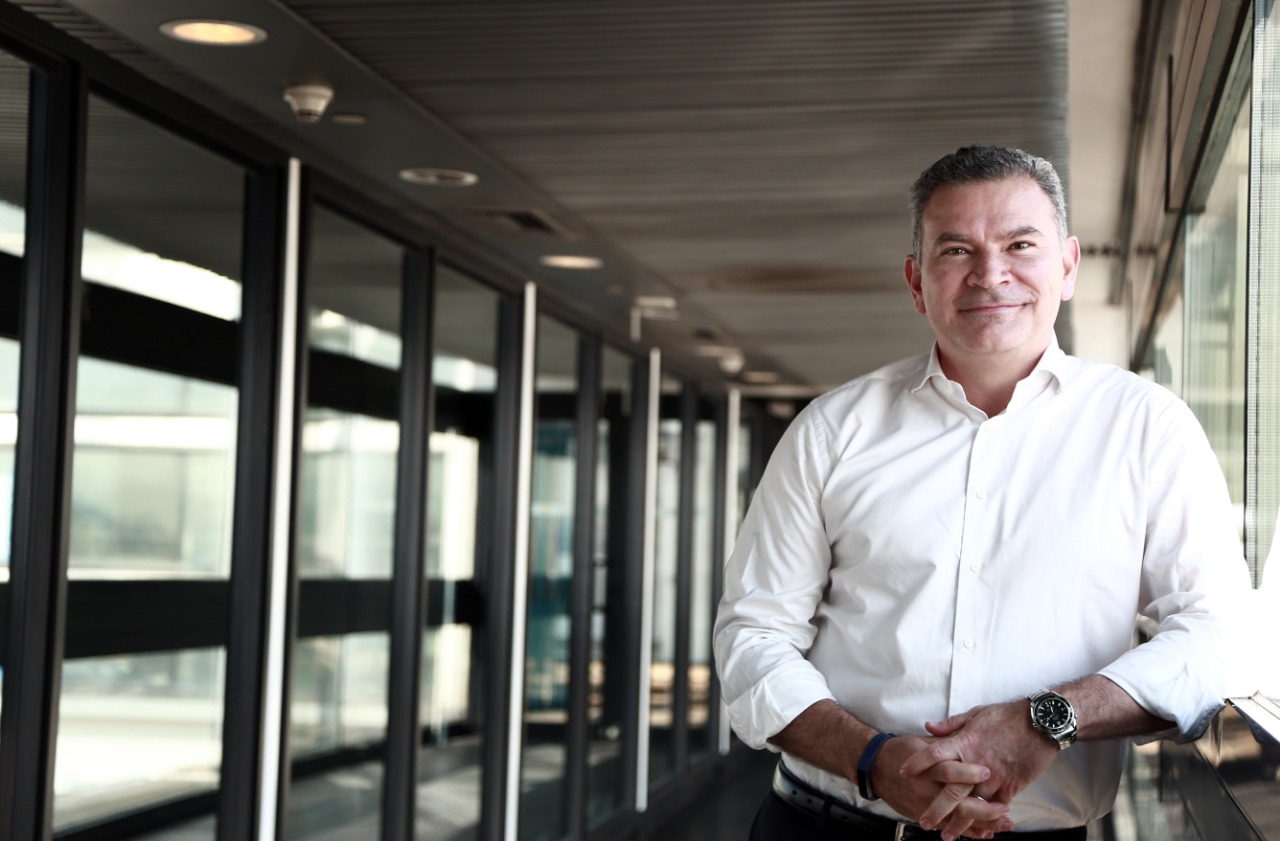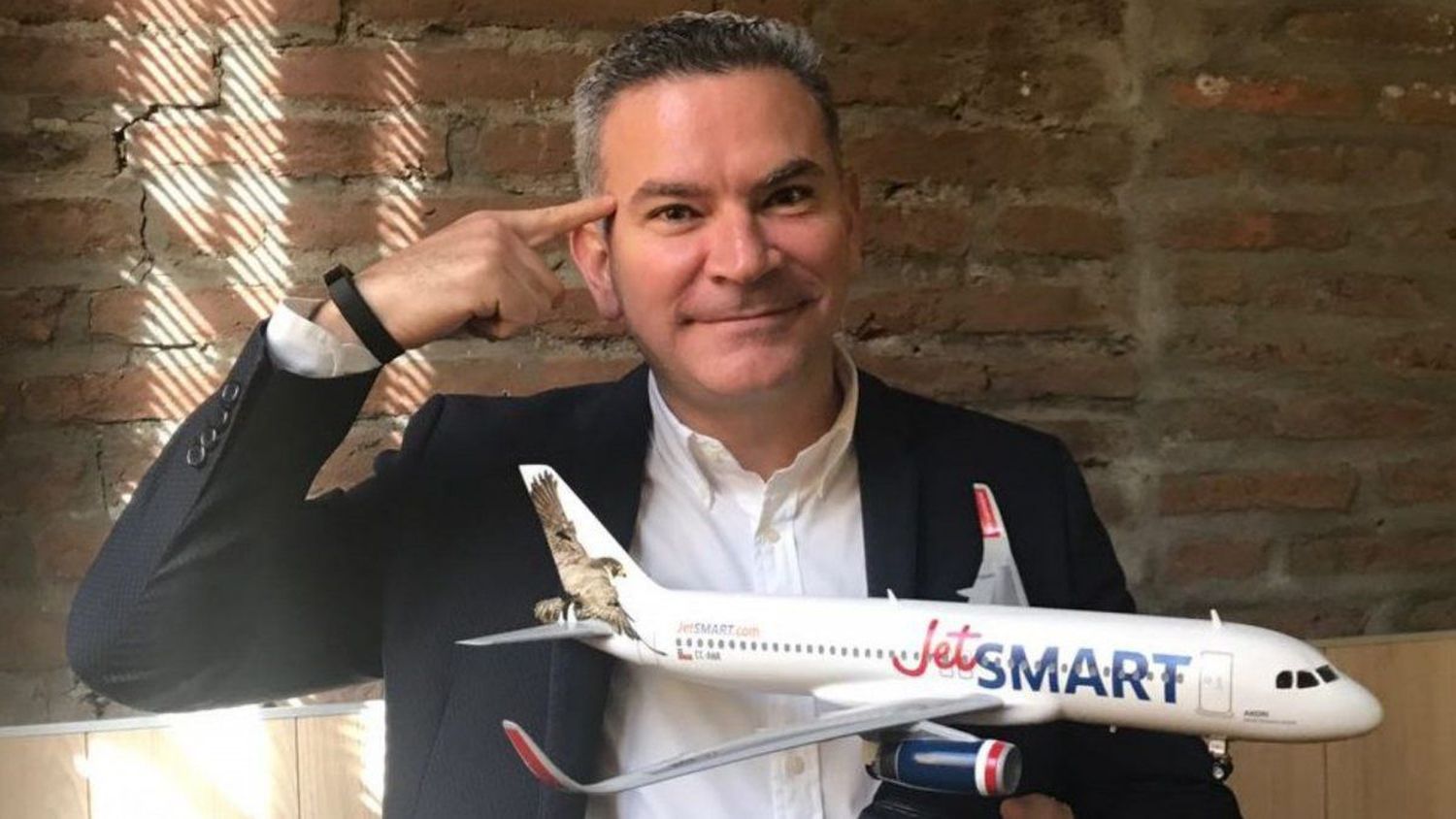Smart Moves for a New World: In-Depth Interview with Estuardo Ortiz, CEO, JetSMART Airlines
Industry Leaders is a weekly section in which we interview key players of the Latin American aviation industry, to share their insights and experience.
Undoubtedly, Indigo Partners’ most southern airline has become one of the key actors in Latin America in the last two years. COVID-19 pandemic hit hard on the region and caught JetSMART in the middle of an expansion process. The company has led a transformation since the start of the restrictions and is aiming to emerge stronger once the market revamps. We chatted with its CEO, Estuardo Ortiz, about the present and the future of the Latin American market.
– Aviacionline: What is the impact of the COVID-19 pandemic on JetSMART’s plans for Latin America?
– Estuardo Ortiz: The pandemic appeared suddenly and with little warning for everyone. We had a heads up as we worked with Wizz Air on some benchmarks, but sales in South America plummeted almost instantly, as a result of the early lockdowns and travel restrictions. It was sudden and drastic.
In the second quarter, we operated about 10-12 percent of our programmed flights. In the third quarter, we reached 20 percent and we expect to operate about 40 percent of the flights we did in 2019 in the fourth quarter. So it has been close to what we expected in terms of recovery pace, but it is a slow pace.
South America is an area that has been hit hard. We are 8 percent of the world population and we have half the world cases. Trends are still rising, we see that governments are not confident in their sanitary capacity. Because of that, they are being extremely reluctant to move forward with easing restrictions.
– AOL: Besides the health pandemic, there is a global economic downturn that is impacting the industry as a whole.
– EO: That’s the other pandemic, the economics: second quarter was terrible for the economy of the countries in the region, and even though we foresee 2021 as a year of recovery, it will be far from 2019 levels. Domestic markets are going to recover more rapidly than the international offering: we expect an 85-90 percent recovery in domestic offering and an international demand lower than 50 percent throughout 2021. We’ve seen outlooks that are far more pessimistic, but we’re confident that we are in a good position for a quick recovery.
– AOL: Despite the restrictions, JetSMART maintained a reduced level of operations in Chile. What was the rationale behind that decision?
– EO: After a hard evaluation of the routes that would make sense to fly, we decided not to cease our operations entirely. That was a great decision for us because we were able to identify unattended domestic demand and generate cash flow: there is a small group of people that needed to continue flying despite the pandemic. This made us the second operator in Chile, just behind LATAM. We are flying several routes that weren’t served before, reaching a 26 percent market share.
Also, we were able to implement and refine all health protocols prior to market reopening. We’re now applying protocols that exceed the local authorities’ requirements.
– AOL: In terms of structure, what were the changes this context drove you to implement?
– EO: We have a cost structure that is simple yet streamlined, which helped us to maintain our resources during these hard months. We think that price will be key in the near future: people will be eager to fly, but money will be scarce in the whole region. Key factors are going to be, without a doubt, safety and price.
We worked on a project that we call JetSmart 2.0: a new offering, less cost, more products. We saw the opportunity and moved forward to seize it. I always like to say that you can’t miss the chances that come with a crisis.

– AOL: What were those cost-cutting measures?
– EO: It has been an interesting process because once we passed the first stages of the ramp-up of operations, we started to identify some initiatives that we overlooked for a while due to the rapid pace of our growth. We split the traditional organization of the company, as it was created to manage the day-to-day operation of an airline that was almost not flying. We reassemble our team into different work cells that addressed a specific topic. Supplier renegotiations, process refinement, fuel strategy, IT platforms, payment services. We attacked several fronts with the goal of generating an additional 10-12 percent of cost reduction.
On the other hand, we started to sell a lot more. We launched new products, bundles, flexible bookings, and that lead to an improvement of 20 percent in revenue. It has been like a football match: when the first half ends, you have some time to adjust the strategy, send in some subs, re-evaluate the conditions.
– AOL: In the long term, is this refinement going to help you position in Latin America?
– EO: Absolutely, this is a great opportunity for JetSmart in Latin America. One of my biggest concerns is the limitations that for ages we have seen in the region. Airports without slots, lack of crews, and segmentation of those crews habilitations per country. In a reality in which key players as LATAM and Avianca are going to significantly reduce their size, we will have options to generate jobs for those that were left behind.
We can seize this opportunity to ramp up the domestic operations in different countries in Latin America, rather than focus on the limitations of international offering, as protocols and restrictions will take some time to coordinate between countries. We’ve applied for an operator certificate in Perú, we are watching closely the situation in Colombia, we are aiming to start operations in Brazil, where the market share and the players are going to change drastically.
In that context, a cost structure like ours, the outstanding order of brand new aircraft with the support of Indigo Partners, and our quick reaction management constitute a good opportunity. There are going to be permanent changes in the demand: corporate travel is going to be severely diminished, and that change is going to reinforce the position of the low-cost carriers, against legacy carriers that base their whole market strategy on that high-fare corporate traveler.
– AOL: One of the reasons for the acquisition of Norwegian Argentina was to target that corporate traveler, with a different product and even a different airport. Is the operation from Aeroparque still a priority?
– EO: Aeroparque is a key factor for us: Its relevance in the Buenos Aires market is paramount. We worked with ANAC and Norwegian in 2019 in the agreement of operation consolidation and we expect that to finalize in the near future and the authorities to ratify what was signed last year and we start to operate our A320s in Aeroparque. Besides, it is positive for the market that after LATAM Argentina’s cease of operations a new operator takes its place in the terminal. The commercial strategy is going to be different for that segment, as the slots, fares, and services that we offer will adjust to the different customer the airport serves.
One thing that sometimes gets overlooked is that the doubts regarding the agreement cast a shadow on something that is key for an airline and a company that is investing and creating jobs, in Argentina and everywhere else: We need predictability. Consistency and rules that are clear for all operators. The uncertainty is not helping at all, and the country is in need of businesses like ours: businesses that create highly qualified jobs and provide services with an important value for the people. The opportunity in the Argentinian market still exists, we want to operate here, but we need certainty.

– AOL: How are fares behaving in this context?
– EO: It’s a strange time for fares now: travel is restricted to people that have a good, justifiable reason for flying. Therefore it is a demand in which decision time is extremely short-termed and not susceptible to stimulus and price. All carriers are going to be focused on finding the proper capacity balance and prices are going to be low to stimulate traveler confidence. In the long run, the price is going to be as low as competition will allow.
– AOL: There were different models of governmental assistance to airlines throughout the world, but the region lacked plans in that sense: do you expect any assistance at this time to restart the operations?
– EO: We received assistance to pay salaries in Argentina and Chile, which was very needed and positive, and at this moment it wouldn’t be realistic for us to expect further governmental funds, as the economic situation is dire. But the most urgent assistance we would need is to restart operations as soon as possible. Touristic infrastructure is severely damaged and it will take years to recover, and it is crucial for the region to fly again.
Aviation is safe, protocols exist, and they work; the industry needs to operate again. Rather than subsidies, we need to get back to flying and generate our own funds. It is absolutely important for the region to restore the international inbound traffic for fresh funds for airlines, touristic operators, touristic locations. We need to have an integral plan.
– AOL: Is JetSMART aiming to fill the spots LATAM and Avianca have left? Is there room for growth in those routes competitors left?
– EO: Our long-term goal is the same, but our vision of reaching that goal has changed a bit. Typically, we would set our business in a country, consolidate and then start to think in a new market. Now, with a demand that is shattered and a slow recovery of international travel ahead, we will get better results serving several domestic markets than waiting for the regional demand to come back.
We have a technological advantage now with the A320neo family, but I have to assume that more sooner than later all competitors will operate similar technology. Despite that, the key difference is how you use the aircraft. Anyone can buy a new plane, it’s the strategy for its best use what will make or break that advantage. We had adjusted our fleet plan to delay some deliveries that were expected in 2020-2021, and as we foresee a steady recovery for 2022-2023 we will be receiving additional aircraft to support that recovery.
– AOL: Industry is claiming for an integrated set of rules across South America. Is this pandemic an opportunity to ease the regulations for a regional standardization?
– EO: It would be a good chance for governments to ease access to certain markets, and to promote investments that are much needed in this context. We don’t have in the region open skies as Europe has; European aviation is much more developed than Latin American, primarily because regulations are the same for all operators. I wish that this is the chance for that to change.
– AOL: Are you intending to operate cargo?
– EO: The Covid-19 pandemic has made clear that cargo is going to have a relevance that we did not anticipate when we started operating. We wanted to keep it simple, but we made our assessment and concluded that cargo operation would add revenue without increasing the costs. We are in the process of selecting vendors, and we expect to start offering belly cargo in the near future.


Para comentar, debés estar registradoPor favor, iniciá sesión